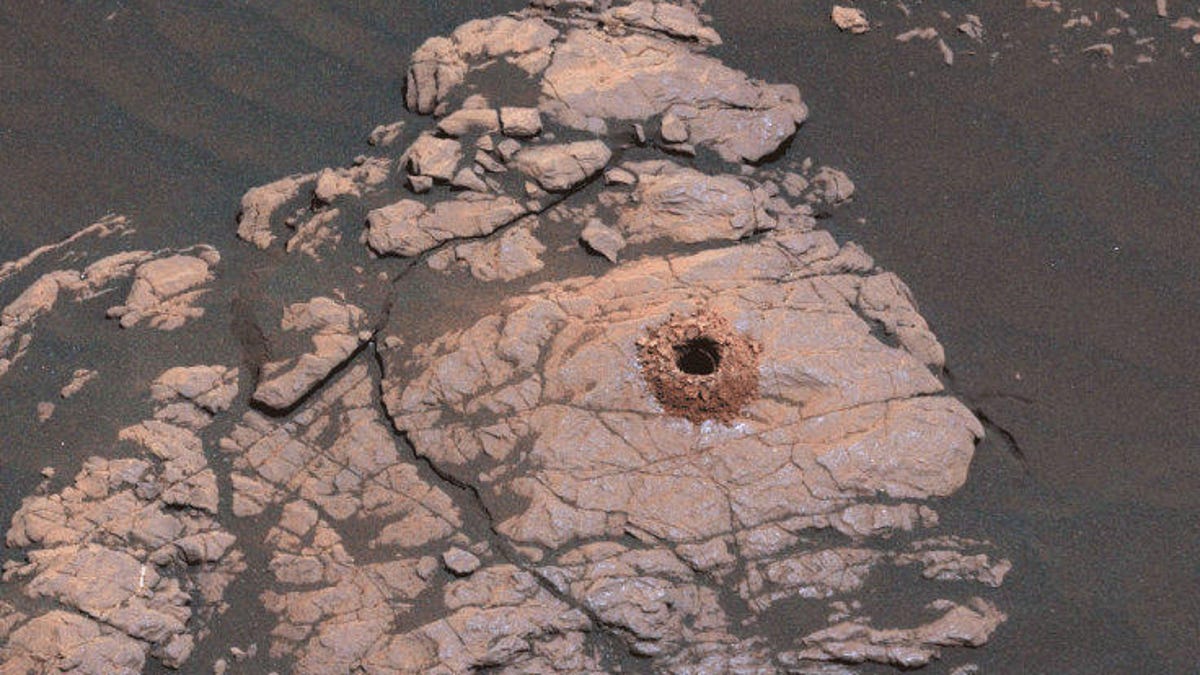See how NASA Curiosity rover rocked Mars landscape with dramatic drilling
Curiosity reshaped Mars a little with its first drill into the fascinating clay-bearing unit.
Curiosity and its team are living out a long-held dream as the rover conducted its first drilling operation in the "clay-bearing unit" of Mars, a region expected to be rich in clay minerals formed by a history of water. It also did some minor landscape redecorating in the process.
The drilling operation created more than just a hole in the bedrock target, nicknamed "Aberlady." The Curiosity team shared a GIF showing the before and after, and the rocks around the drilled area seem to have moved when the rover retracted the drill bit.
Did I do that? 🤓
— Curiosity Rover (@MarsCuriosity) April 11, 2019
This #Mars rock was so soft, I didn't need to use percussion, making it the first sample obtained with drill rotation alone. This gif of "Aberlady" shows that it and surrounding rocks appear to have moved when the bit was retracted. https://t.co/nA2SJjblgu pic.twitter.com/jrqwr2MT9p
Usually, the rover uses a percussive drilling technique to work its way into hard rocks. It didn't have to this time because the rock was so soft. "This was the mission's first sample obtained using only rotation of the drill bit," NASA said on Thursday.
NASA has had its eye on this clay-rich area since it first chose the Gale Crater as Curiosity's landing spot. The rover is now working to analyze the drill hole and rock powder. Scientists are eager to know if it contains traces of clay minerals that typically form in water.
"We're excited to see what this first sample tells us about the ancient environment, especially about water," Curiosity Project Scientist Ashwin Vasavada said.
Mars may be a dry and dusty place now, but Curiosity hopes to peel back the layers of the Red Planet's history. It just might have to push around a few rocks in the process.


